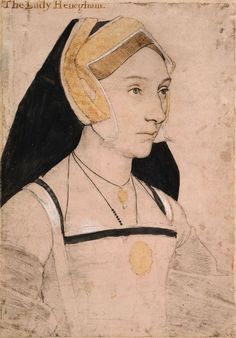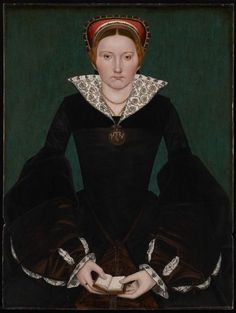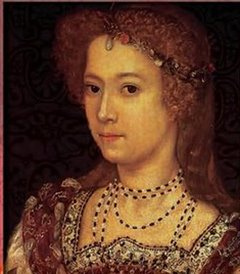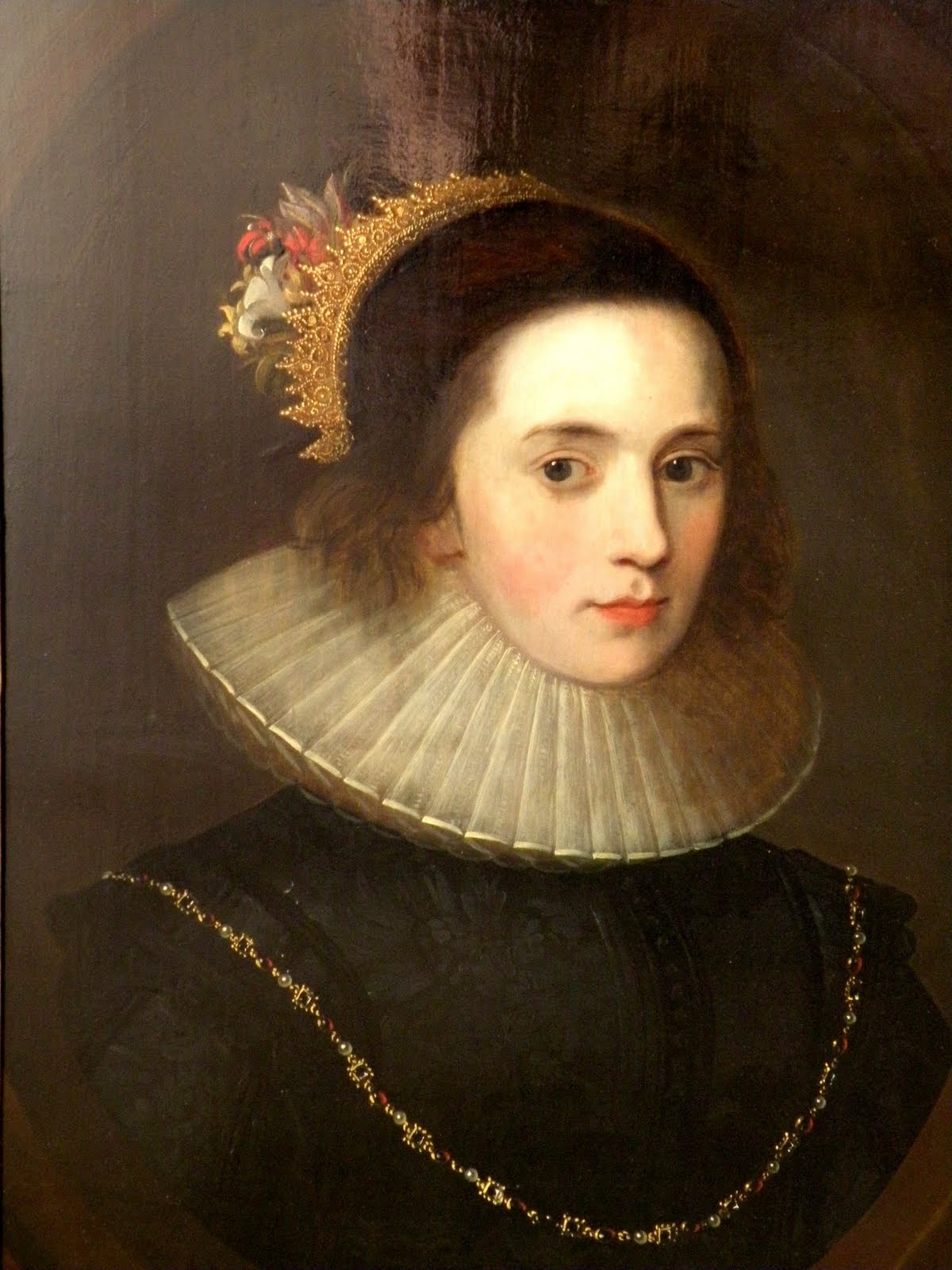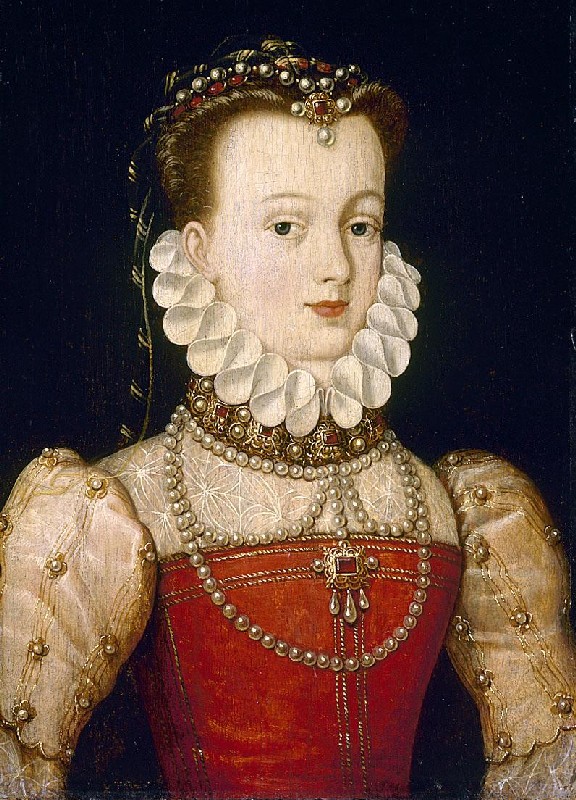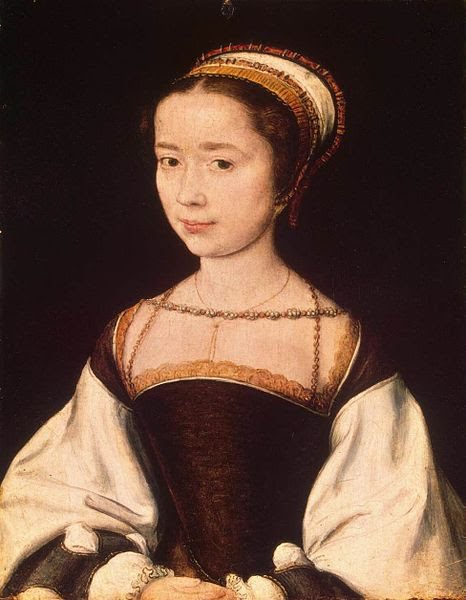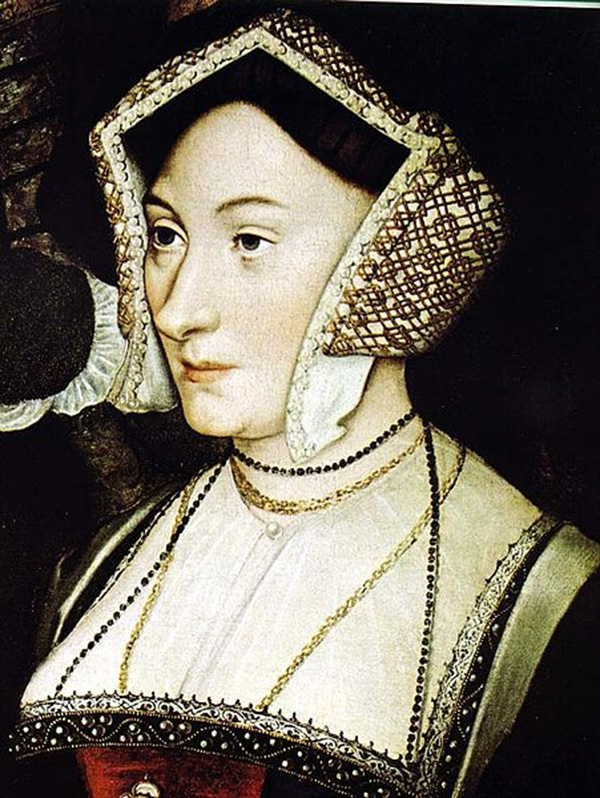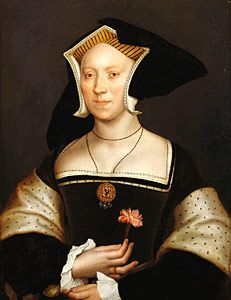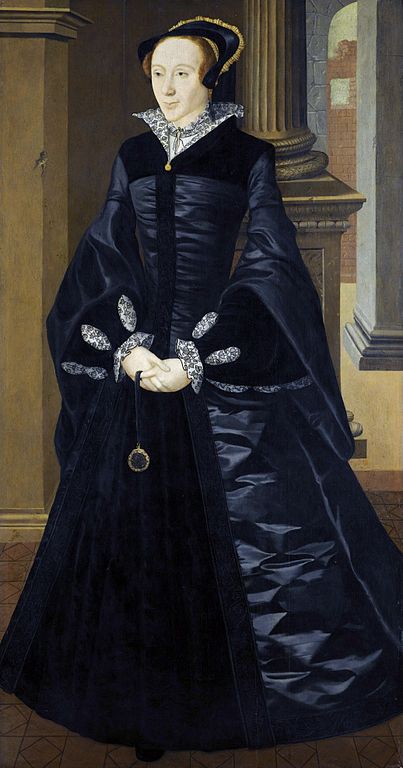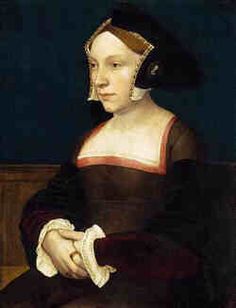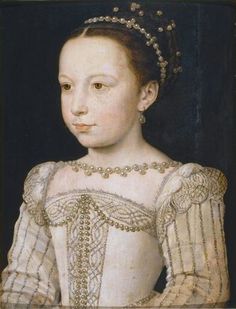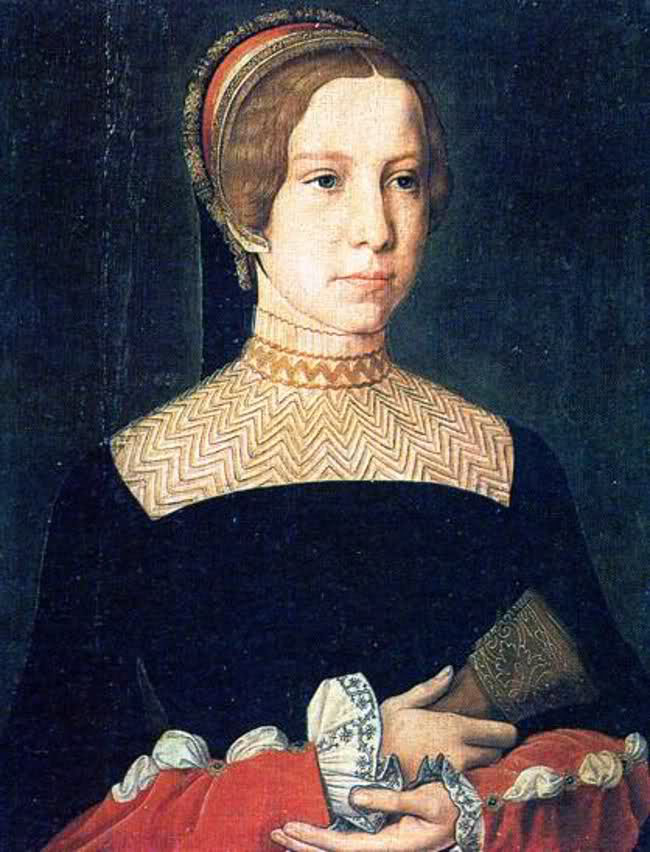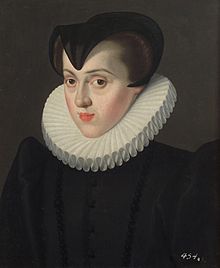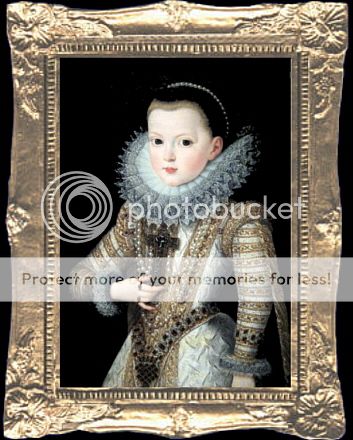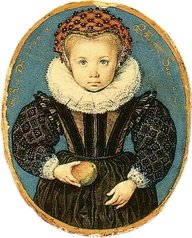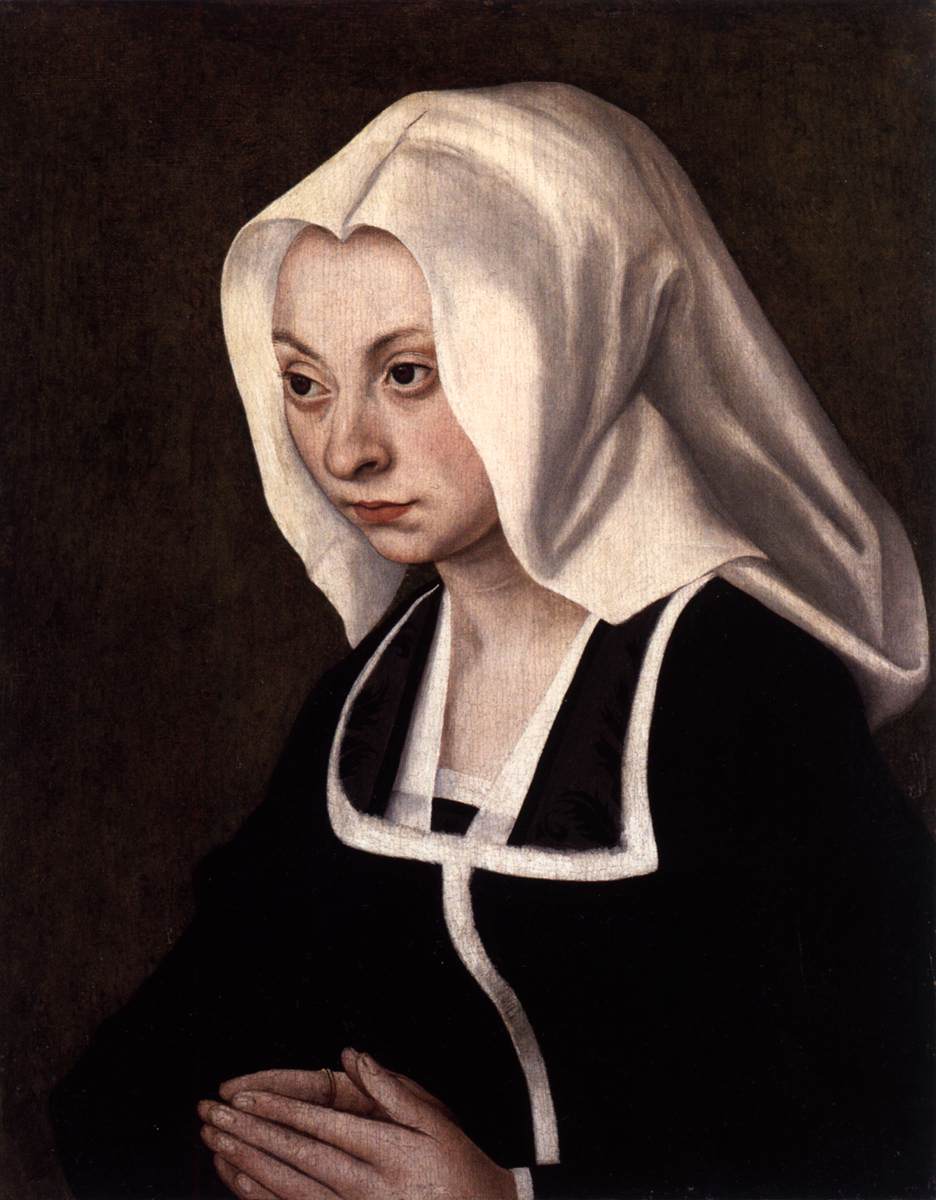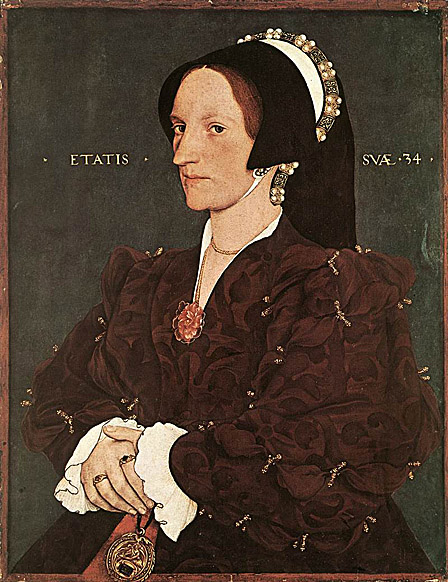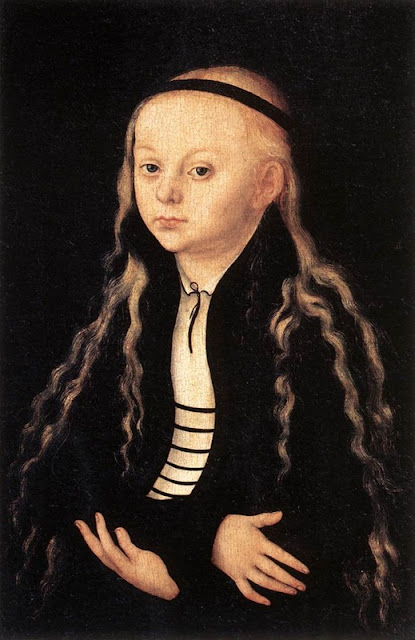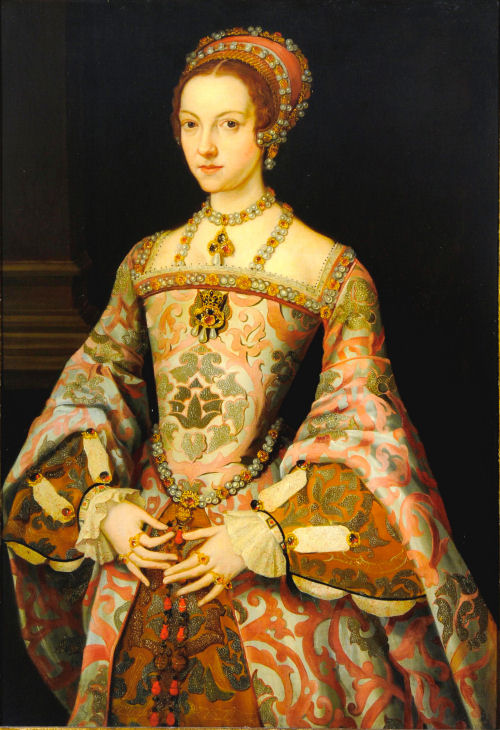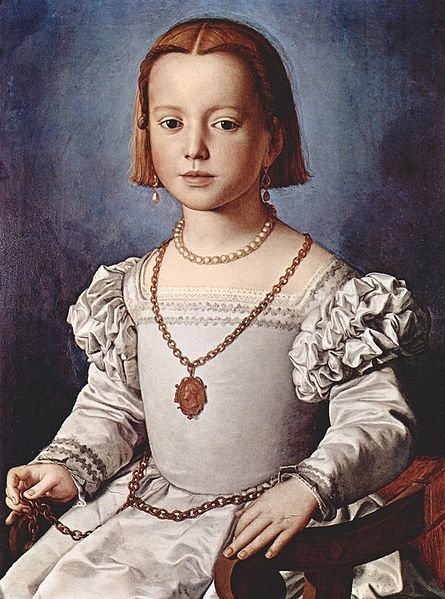You are using an out of date browser. It may not display this or other websites correctly.
You should upgrade or use an alternative browser.
You should upgrade or use an alternative browser.
Anne Boleyn's Brood
- Thread starter Kynan
- Start date
Flowchart of the Marriages of the European Royalty
1) Henry VIII marries (a) Catherine of Aragon –annuled by the Church of England-
(b) Anne Boleyn
(c) Amalia of Cleves
(d) Jane Seymour –mistress-
1a) Mary Tudor marries (b) William of Jülich-Cleves-Berge
marries (b) Catherine Howard
1ab) Catherine of Jülich-Cleves-Berge
2ab) Charles of Jülich-Cleves-Berge
3ab) Various other miscarriages
1bc) Anne of Jülich-Cleves-Berge –before marriage-
2bc) Margaret of Jülich-Cleves-Berge –before marriage-
3bc) John of Jülich-Cleves-Berge
4bc) Magdalene of Jülich-Cleves-Berge
5bc) Sibylle of Jülich-Cleves-Berge
1b) Elizabeth Tudor marries (a) James of Scotland
1ba) Elizabeth of Scotland
2ba) Mary of Scotland
3ba) Anne of Scotland
4ba) James of Scotland
5ba) Robert of Scotland
6ba) Various other miscarriages
2b) Anne Tudor marries (a) Ferdinand of Austria
(b) Charles Francis of Austria
1ba) Ferdinand of Austria
2ba) Isabella of Austria
1bb) Anne of Austria
2bb) Margaret of Austria
3bb) Charles of Austria
4bb) Joanna of Austria
5bb) 1 other miscarriage
3b) Henry Tudor marries (a) Maria of Austria
(b) Johanna of Austria
1ba) Anne of England
2ba) Margaret of England
3ba) Henry of England
4ba) Edward of England
1bb) Charles of England
2bb) Richard of England
3bb) Elizabeth of England
4bb) Jane of England
4b) Margaret Tudor marries (a) João Manuel of Portugal
1ba) Sebastion of Portragul
2ba) Maria of Portragul
3ba) Barbara of Portragul
4b) Edward Tudor marries (a) Maria of Portragul
(b) Jane Grey
1ba) Edward of England
2ba) Anne of England
3ba) Margaret of England
1bb) Elizabeth of England
2bb) Henry of England
3bb) Arthur of England
4bb) Jaspar of England
5b) Bridget Tudor marries (a) Thomas Howard
1ba) Anne of England
6b) Cecily Tudor marries (a) Charles Francis of Austria
1ba) Isabella of Austria
7b) Edmund Tudor marries (a) Barbara of Austria
1ba) Henry of England
2ba) Edward of England
3ba) Arthur of England
4ba) Jasper of England
5ba) Jane of England
8b) Arthur Tudor marries (a) Marie-Anne of France
1ba) Micheal of England
2ba) Gabriel of England
3ba) Ester of England
4ba) Mary of England
1c) Catherine Tudor –died young-
1d) Mary Seymour marries (a) Henry Brandon
1da) Henry Brandon
2da) Jane Brandon
3da) Margaret Brandon
2d) Jane Clere –dies young-
3d) Mathew Clere marries (a) Mary Brandon
1da) Micheal Clere
2da) Jasper Clere
3da) Mary Clere
4da) Catherine Clere
4d) Catherine Clere (a) Charles Brandon
1da) Mathew Brandon
2da) Jane Brandon
3da) Anne Brandon
2) Francis I of France marries (a) Claude, Duchess of Brittany
(b) Eleanor of Austria
1a) Francis Valois marries (a) Christina of Denmark
1aa) Catherine of France
2aa) Marie-Anne of France
3aa) Francis of France
4aa) Henry of France
5aa) Claude of France
2a) Henry Valois marries (a) Catherine de Medici
1aa) Anne of France
2aa) Henry of France
3aa) Margaret of France
3a) Madeleine Valois marries (a) Louis de La Trémoille
1aa) Marie de La Trémoille
2aa) Margaret de La Trémoille
3aa) Madeleine de La Trémoille
4aa) Mathew of France
4a) Charles Valois marries (a) Margaret Douglas
1aa) Anne of France
2aa) Charles of France
3aa) Margaret of France
5a) Margaret Valois marries (a) Francis of Lorraine
(b) Henry Stuémile –unknown, obscure nobleman-
1aa) Francis of Lorraine
1ab) Louise Stuémile
1b) Eleanor Valois –nun-
3) Charles V marries (a) Isabella of Portragul
1a) Philip of Spain marries (a) Elisabeth of Brunswick-Calenberg
1aa) Carlos of Spain
2aa) Isabella of Spain
3aa) Maria of Spain
4aa) Diego of Spain
5aa) Phillip of Spain
2a) Maria of Austria marries (a) Sigismund Augustus -1st wife died 1544-
1aa) Hedwig of Poland
2aa) Isabella of Poland
3aa) Casimir of Poland
4aa) Alexander of Poland
5aa) Catherine of Poland
4) James V of Scotland marries (a) Margaret Erskine marries (b) James Hamilton, King of Scotland
1a) James of Scotland marries (a) Elizabeth Tudor
1ba) Elizabeth of Scotland
2ba) Mary of Scotland
3ba) Anne of Scotland
4ba) James of Scotland
5ba) Robert of Scotland
6ba) Various other miscarriages
2a) Robert of Scotland marries (a) Anna Marie of Brunswick-Lüneburg
1aa) Margaret of Scotland
2aa) Arthur of Scotland
1ab) Mary of Scotland –dies young-
1) Henry VIII marries (a) Catherine of Aragon –annuled by the Church of England-
(b) Anne Boleyn
(c) Amalia of Cleves
(d) Jane Seymour –mistress-
1a) Mary Tudor marries (b) William of Jülich-Cleves-Berge
marries (b) Catherine Howard
1ab) Catherine of Jülich-Cleves-Berge
2ab) Charles of Jülich-Cleves-Berge
3ab) Various other miscarriages
1bc) Anne of Jülich-Cleves-Berge –before marriage-
2bc) Margaret of Jülich-Cleves-Berge –before marriage-
3bc) John of Jülich-Cleves-Berge
4bc) Magdalene of Jülich-Cleves-Berge
5bc) Sibylle of Jülich-Cleves-Berge
1b) Elizabeth Tudor marries (a) James of Scotland
1ba) Elizabeth of Scotland
2ba) Mary of Scotland
3ba) Anne of Scotland
4ba) James of Scotland
5ba) Robert of Scotland
6ba) Various other miscarriages
2b) Anne Tudor marries (a) Ferdinand of Austria
(b) Charles Francis of Austria
1ba) Ferdinand of Austria
2ba) Isabella of Austria
1bb) Anne of Austria
2bb) Margaret of Austria
3bb) Charles of Austria
4bb) Joanna of Austria
5bb) 1 other miscarriage
3b) Henry Tudor marries (a) Maria of Austria
(b) Johanna of Austria
1ba) Anne of England
2ba) Margaret of England
3ba) Henry of England
4ba) Edward of England
1bb) Charles of England
2bb) Richard of England
3bb) Elizabeth of England
4bb) Jane of England
4b) Margaret Tudor marries (a) João Manuel of Portugal
1ba) Sebastion of Portragul
2ba) Maria of Portragul
3ba) Barbara of Portragul
4b) Edward Tudor marries (a) Maria of Portragul
(b) Jane Grey
1ba) Edward of England
2ba) Anne of England
3ba) Margaret of England
1bb) Elizabeth of England
2bb) Henry of England
3bb) Arthur of England
4bb) Jaspar of England
5b) Bridget Tudor marries (a) Thomas Howard
1ba) Anne of England
6b) Cecily Tudor marries (a) Charles Francis of Austria
1ba) Isabella of Austria
7b) Edmund Tudor marries (a) Barbara of Austria
1ba) Henry of England
2ba) Edward of England
3ba) Arthur of England
4ba) Jasper of England
5ba) Jane of England
8b) Arthur Tudor marries (a) Marie-Anne of France
1ba) Micheal of England
2ba) Gabriel of England
3ba) Ester of England
4ba) Mary of England
1c) Catherine Tudor –died young-
1d) Mary Seymour marries (a) Henry Brandon
1da) Henry Brandon
2da) Jane Brandon
3da) Margaret Brandon
2d) Jane Clere –dies young-
3d) Mathew Clere marries (a) Mary Brandon
1da) Micheal Clere
2da) Jasper Clere
3da) Mary Clere
4da) Catherine Clere
4d) Catherine Clere (a) Charles Brandon
1da) Mathew Brandon
2da) Jane Brandon
3da) Anne Brandon
2) Francis I of France marries (a) Claude, Duchess of Brittany
(b) Eleanor of Austria
1a) Francis Valois marries (a) Christina of Denmark
1aa) Catherine of France
2aa) Marie-Anne of France
3aa) Francis of France
4aa) Henry of France
5aa) Claude of France
2a) Henry Valois marries (a) Catherine de Medici
1aa) Anne of France
2aa) Henry of France
3aa) Margaret of France
3a) Madeleine Valois marries (a) Louis de La Trémoille
1aa) Marie de La Trémoille
2aa) Margaret de La Trémoille
3aa) Madeleine de La Trémoille
4aa) Mathew of France
4a) Charles Valois marries (a) Margaret Douglas
1aa) Anne of France
2aa) Charles of France
3aa) Margaret of France
5a) Margaret Valois marries (a) Francis of Lorraine
(b) Henry Stuémile –unknown, obscure nobleman-
1aa) Francis of Lorraine
1ab) Louise Stuémile
1b) Eleanor Valois –nun-
3) Charles V marries (a) Isabella of Portragul
1a) Philip of Spain marries (a) Elisabeth of Brunswick-Calenberg
1aa) Carlos of Spain
2aa) Isabella of Spain
3aa) Maria of Spain
4aa) Diego of Spain
5aa) Phillip of Spain
2a) Maria of Austria marries (a) Sigismund Augustus -1st wife died 1544-
1aa) Hedwig of Poland
2aa) Isabella of Poland
3aa) Casimir of Poland
4aa) Alexander of Poland
5aa) Catherine of Poland
4) James V of Scotland marries (a) Margaret Erskine marries (b) James Hamilton, King of Scotland
1a) James of Scotland marries (a) Elizabeth Tudor
1ba) Elizabeth of Scotland
2ba) Mary of Scotland
3ba) Anne of Scotland
4ba) James of Scotland
5ba) Robert of Scotland
6ba) Various other miscarriages
2a) Robert of Scotland marries (a) Anna Marie of Brunswick-Lüneburg
1aa) Margaret of Scotland
2aa) Arthur of Scotland
1ab) Mary of Scotland –dies young-
Last edited:
1540: Thear began with the birth of four princesses. Anne Boleyn, Christina of Denmark and Margaret of Scotland all had children within a week of each other. Anne was the first to emerge, with two healthy baby girls, named Bridget and Cecily after their grand-aunts (Henry’s aunts). Next was Christina of Denmark, with another healthy female infant. Named Catherine of France after her aunt Catherine de Medici (who had formed a friendship with the dauphine), she was noted as ‘pale, pretty and perfect’ by her father, who grew to dote on the girl all of his life. Finally, Margaret of Scotland emerged with a small princess, but unlike the others, she was not healthy. Small, sickly and scarred (she was born with a large birthmark covering the left half of her face), she was not long for this world. But she hungon for a week, in which time she was named Mary. This as a disappointment to both Margaret and Hamilton, who had not expected this result with their child.
Another birth that occurred early in the year was that of William of Jülich-Cleves-Berge and Catherine Howard’s illegitimate daughter Anne of Jülich-Cleves-Berge. The first child that the man had had, he supposedly was to have said she was ‘as gorgeous as the sun, and twice s bright’. There was talk that this birth would mean that Catherine would be married off to an obscure nobleman somewhere in the court, but instead she was simply set back into her rooms, immediate next to Williams. At her child’s birth though, Mary announced that she was expecting a child. The court sensed the seeming competition between the two, as Mary desperately wanted children while Catherine just seemed to pop them out, but all they could do is watch from the sidelines and wait to see who would come out on top.
The year also brought the sudden death of Catherine of Austria, the fiance of James of Scotland. This was a shock to many, and the official stance was that the cause was unknown. But there was talk of poison, disproved at a later date, with the death actually caused by food poisoning. With this betrothal now done, James Hamilton had his ambassador approach Henry VIII to betroth Elizabeth Tudor to the young prince James. This perked Henry up, as Phillip of Spain’s offer of betrothal had been reclined and Emmanuel Philibert wasn’t the catch he wanted for his first daughter. But with James of Scotland, he would get her a king and also possibly pull the still pro-France Scotland towards England. It was decided that Elizabeth would be sent over to Scotland on her thirteenth birthday but the marriage would not be consummated until she turned fifteen. The dowry was a seeming problem, but that would be fixed with a few months of talks.
Another marriage related item that popped up was the engagemant of the two new English Princesses. While Cecily was engaged to the foreign prince Charles Francis of Austria to ensure a more secure alliance, Bridget was offered to Thomas Howard, a relative of Queen Anne. Mary Seymour, the first child of Jane Clere and Henry was offered to Charles Brandon for his son, Henry Brandon. This was somewhat of a reward for the years that Charles had stood beside Henry.
Over in France, there was a buzz over the sudden announcement that Catherine de Medici was pregnant. There was a rush of controvery over this development, with courtiers whispering their theories; from witchcraft, to ethnic medicines to a visit to one of the stableboys. But one person did concradulate her, Diane de Poitiers. The reasons for her actions were the blood relations between the two and the security that Catherine gave to Diane, if only because she was a known quantity. Henry Valois reacted to the news as a ‘get out of spending time with my wife’ card, leaving the actualy court for 3 months to spend time with Diane de Poitiers. There relationship was just getting stronger, and the King himself was getting tired of it.
At the same time, little princess Catherine Valois was now on the market, with offers to marry Louis of Simmern and Louis of Hesse-Marburg. Admittedly not the princes of great empires, but with so many betrothals already in place and more princesses than princes, they were good options. There was also talk of Emmanuel Philibert, but the age difference dissuaded that match. But she was still young yet, and there would be other princes to come.
Princess Madeliene, a favourite child of Francis I, was betrothed to Louis de La Trémoille a young nobleman who the king had taken a liking to. The terms of the betrothal were that when she reached her twentieth birthday she would marry him and move to his estates, as was usual. But there was the added clause that if and when she got pregnant, she would be moved to one of the estates that Francis had built. And after she had given birth they would wait a year before trying again. This was considered ‘strange’ but the King was adament, he would not put his pretty little daughter in more danger of death than nessessary.
Over in Bohemia (where Ferdinand of Castile, King of Hungary, Croatia and Hungary was currently located), there was a request to bring the Princess Anne Tudor to the court, to grow accustomed to the life in the court and to get to know her future family. Though Henry VIII agreed at the time, Queen Anne convinced him to tell them that they would have to wait until she was at least nine or ten, so that she would be mature enough to handle the seperation. But at their constant nagging, he agreed that when Princess Anne would be sent over, Cecily would join her. They would be leaving in 1547, when both girls would be ‘old enough’, at least by Henry and Anne’s standards.
In Scotland, Queen Margaret was noted as ‘overly sad’ and ‘temperamental’ months after the death of her daughter. While not exactly the most uncommon of phenomenom with mothers who have lost their child, the court (particularly Margaret Tudor, who had become close friends with this Margaret) was scared for her safety. But they were all shocked when, in late December, the Queen commiteed suicide by stabing herself multiple times. The hardest hit over this development was James Hamilton, who had truly seemed to grow fond of (maybe even love) his wife. And then there was the children, who were to have taken it very hard. While only nine and three at the time, the princes had always been close to their mother, who had actually raised them, refusing the normal methods of multiple nannies and wet-nurses. The young James reacted in a way that shaped his future. Prior to this death, he had been a very hyperactive child, and had neglected his schoolwork. But, the day that his mother had died she had scolded him over this and, somewhere in his childlike brain, he had made the connection and from then on put his schoolwork and learning to the highest priority. Robert, being only a toddler, reacted mostly with tears and the like, causing a fuss that really only subsided a year after the event.
Back in Cleves, it was approaching Mary Tudor’s due date. The court was abuzz with the rivalry that was growing between the wife and mistress of William of Jülich-Cleves-Berge. There was screaming matches regulary, expensive ornaments broken at all times and always, William sided with his mistress. With all the stress, it was no wonder that the old Duke, aged only fourty-nine, died as the result of a heart attack. And when the news was given to Mary, she reacted by going into labour, a month before her due date. This was a surprise, but with the help of well trained midwifes, she managed to give birth to a seemingly healthy baby girl, the new Catherine of Jülich-Cleves-Berge (named after Mary’s mother, Catherine of Aragon). This seemed to bond the husband and wife, but this quick reconciliation (or simply conciliation) only lasted a short time, then William went back to his sweetheart, Catherine Howard.
Finally there was a fight in Hever Castle, where Anne Boleyn was visiting her parents, in which Jane Clere (formally Seymour) dropped by. She was supposedly close friends with Elizabeth Boleyn, Countess of Wiltshire (now going on 60), though this has been debated. But anyway, Jane came to Hever, and she and Anne had words. Not everything said in this fight is known, but there was one line that became infamous. Recorded by a barely literate servant who then gtave the information to George Boleyn, Jane was supposed to have said:
“…and mistress, have you introduced our Lord to your cousin the blacksmith in Blickling, or on of your many Smith relations?”
Anne, supposedly furious at the woman’s insults to her family, said:
“…dear Jane Clere, have you forgotten that I outrank you even without the King? You also forget that we are but cousins ourselves, so would happen to be sister to the blacksmith?”
Jane supposedly stormed off, but when they were next recorded as meeting, there was nothing but civility present. But one thing did change because of this meeting, the King seemed to be less besotted with Jane. He still met her in his bedchambers, but she was no longer someone who could keep his mood sweet.
Another birth that occurred early in the year was that of William of Jülich-Cleves-Berge and Catherine Howard’s illegitimate daughter Anne of Jülich-Cleves-Berge. The first child that the man had had, he supposedly was to have said she was ‘as gorgeous as the sun, and twice s bright’. There was talk that this birth would mean that Catherine would be married off to an obscure nobleman somewhere in the court, but instead she was simply set back into her rooms, immediate next to Williams. At her child’s birth though, Mary announced that she was expecting a child. The court sensed the seeming competition between the two, as Mary desperately wanted children while Catherine just seemed to pop them out, but all they could do is watch from the sidelines and wait to see who would come out on top.
The year also brought the sudden death of Catherine of Austria, the fiance of James of Scotland. This was a shock to many, and the official stance was that the cause was unknown. But there was talk of poison, disproved at a later date, with the death actually caused by food poisoning. With this betrothal now done, James Hamilton had his ambassador approach Henry VIII to betroth Elizabeth Tudor to the young prince James. This perked Henry up, as Phillip of Spain’s offer of betrothal had been reclined and Emmanuel Philibert wasn’t the catch he wanted for his first daughter. But with James of Scotland, he would get her a king and also possibly pull the still pro-France Scotland towards England. It was decided that Elizabeth would be sent over to Scotland on her thirteenth birthday but the marriage would not be consummated until she turned fifteen. The dowry was a seeming problem, but that would be fixed with a few months of talks.
Another marriage related item that popped up was the engagemant of the two new English Princesses. While Cecily was engaged to the foreign prince Charles Francis of Austria to ensure a more secure alliance, Bridget was offered to Thomas Howard, a relative of Queen Anne. Mary Seymour, the first child of Jane Clere and Henry was offered to Charles Brandon for his son, Henry Brandon. This was somewhat of a reward for the years that Charles had stood beside Henry.
Over in France, there was a buzz over the sudden announcement that Catherine de Medici was pregnant. There was a rush of controvery over this development, with courtiers whispering their theories; from witchcraft, to ethnic medicines to a visit to one of the stableboys. But one person did concradulate her, Diane de Poitiers. The reasons for her actions were the blood relations between the two and the security that Catherine gave to Diane, if only because she was a known quantity. Henry Valois reacted to the news as a ‘get out of spending time with my wife’ card, leaving the actualy court for 3 months to spend time with Diane de Poitiers. There relationship was just getting stronger, and the King himself was getting tired of it.
At the same time, little princess Catherine Valois was now on the market, with offers to marry Louis of Simmern and Louis of Hesse-Marburg. Admittedly not the princes of great empires, but with so many betrothals already in place and more princesses than princes, they were good options. There was also talk of Emmanuel Philibert, but the age difference dissuaded that match. But she was still young yet, and there would be other princes to come.
Princess Madeliene, a favourite child of Francis I, was betrothed to Louis de La Trémoille a young nobleman who the king had taken a liking to. The terms of the betrothal were that when she reached her twentieth birthday she would marry him and move to his estates, as was usual. But there was the added clause that if and when she got pregnant, she would be moved to one of the estates that Francis had built. And after she had given birth they would wait a year before trying again. This was considered ‘strange’ but the King was adament, he would not put his pretty little daughter in more danger of death than nessessary.
Over in Bohemia (where Ferdinand of Castile, King of Hungary, Croatia and Hungary was currently located), there was a request to bring the Princess Anne Tudor to the court, to grow accustomed to the life in the court and to get to know her future family. Though Henry VIII agreed at the time, Queen Anne convinced him to tell them that they would have to wait until she was at least nine or ten, so that she would be mature enough to handle the seperation. But at their constant nagging, he agreed that when Princess Anne would be sent over, Cecily would join her. They would be leaving in 1547, when both girls would be ‘old enough’, at least by Henry and Anne’s standards.
In Scotland, Queen Margaret was noted as ‘overly sad’ and ‘temperamental’ months after the death of her daughter. While not exactly the most uncommon of phenomenom with mothers who have lost their child, the court (particularly Margaret Tudor, who had become close friends with this Margaret) was scared for her safety. But they were all shocked when, in late December, the Queen commiteed suicide by stabing herself multiple times. The hardest hit over this development was James Hamilton, who had truly seemed to grow fond of (maybe even love) his wife. And then there was the children, who were to have taken it very hard. While only nine and three at the time, the princes had always been close to their mother, who had actually raised them, refusing the normal methods of multiple nannies and wet-nurses. The young James reacted in a way that shaped his future. Prior to this death, he had been a very hyperactive child, and had neglected his schoolwork. But, the day that his mother had died she had scolded him over this and, somewhere in his childlike brain, he had made the connection and from then on put his schoolwork and learning to the highest priority. Robert, being only a toddler, reacted mostly with tears and the like, causing a fuss that really only subsided a year after the event.
Back in Cleves, it was approaching Mary Tudor’s due date. The court was abuzz with the rivalry that was growing between the wife and mistress of William of Jülich-Cleves-Berge. There was screaming matches regulary, expensive ornaments broken at all times and always, William sided with his mistress. With all the stress, it was no wonder that the old Duke, aged only fourty-nine, died as the result of a heart attack. And when the news was given to Mary, she reacted by going into labour, a month before her due date. This was a surprise, but with the help of well trained midwifes, she managed to give birth to a seemingly healthy baby girl, the new Catherine of Jülich-Cleves-Berge (named after Mary’s mother, Catherine of Aragon). This seemed to bond the husband and wife, but this quick reconciliation (or simply conciliation) only lasted a short time, then William went back to his sweetheart, Catherine Howard.
Finally there was a fight in Hever Castle, where Anne Boleyn was visiting her parents, in which Jane Clere (formally Seymour) dropped by. She was supposedly close friends with Elizabeth Boleyn, Countess of Wiltshire (now going on 60), though this has been debated. But anyway, Jane came to Hever, and she and Anne had words. Not everything said in this fight is known, but there was one line that became infamous. Recorded by a barely literate servant who then gtave the information to George Boleyn, Jane was supposed to have said:
“…and mistress, have you introduced our Lord to your cousin the blacksmith in Blickling, or on of your many Smith relations?”
Anne, supposedly furious at the woman’s insults to her family, said:
“…dear Jane Clere, have you forgotten that I outrank you even without the King? You also forget that we are but cousins ourselves, so would happen to be sister to the blacksmith?”
Jane supposedly stormed off, but when they were next recorded as meeting, there was nothing but civility present. But one thing did change because of this meeting, the King seemed to be less besotted with Jane. He still met her in his bedchambers, but she was no longer someone who could keep his mood sweet.
How far are you taking this?
I really don't know.

Coat of Arms of the Princes of Moray.

King James VI of Scotland (1559)
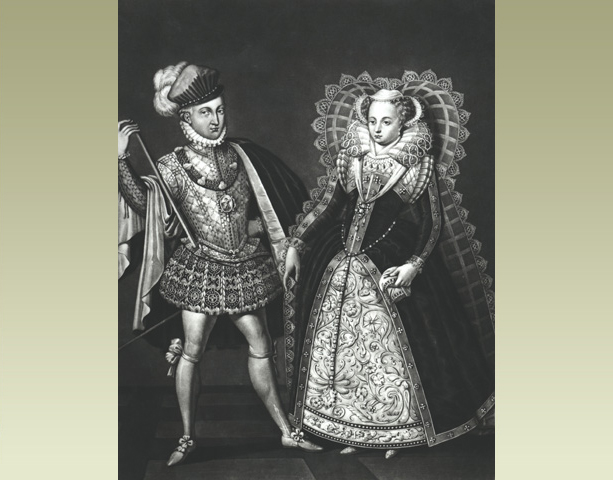
James Stewart, Prince of Scotland and Elizabeth Tudor, Princess Constort of Scotland (1556)
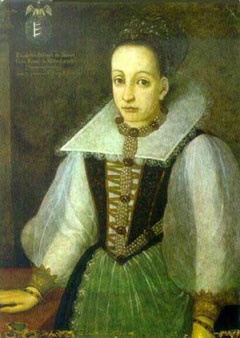
Anne of Jülich-Cleves-Berge (1561)
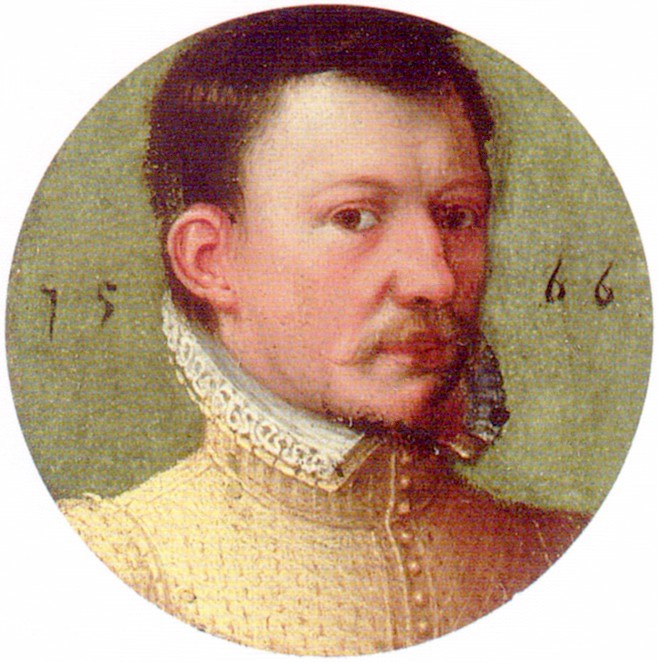
Robert Stewart, Prince of Scotland (1570)
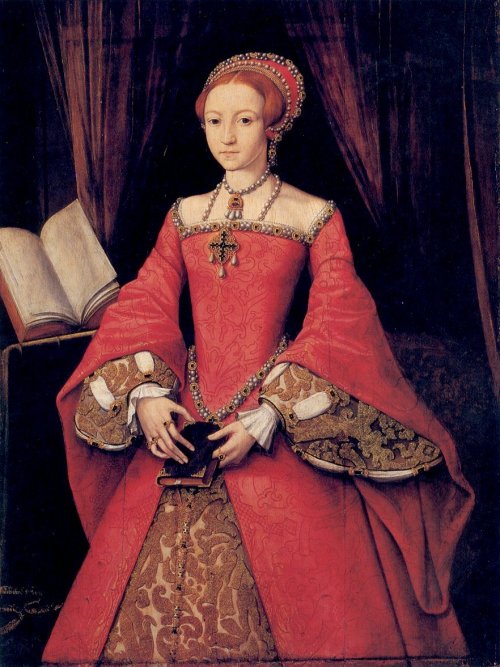
Princess Elizabeth Tudor (1547)

Henry FitzRoy, 1st Duke of Richmond and Somerset (unknown, between 1535/1540)
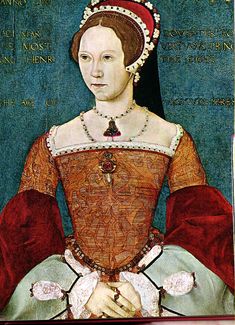
Mary Tudor, before a planned trip back to England (1545)

Margaret Erskine -post death portrait, ordered by James Hamilton- (1542)

Isabella of Spain (1563)

Anne of Scotland (1589)
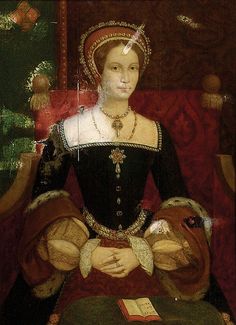
Bridget Tudor (1559)

Catherine Clere (1571)
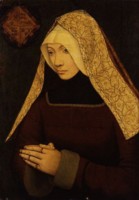
Elizabeth Valois (1578)
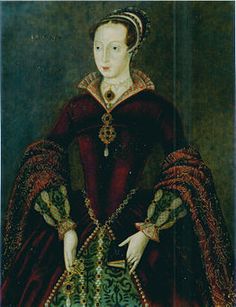
Lady Jane Grey (1553)

Amalia of Cleves (1546)

Catherine Tudor (1552)
1541: The year began with three pregnancies announced. The first was that of Anne Boleyn, who was still pumping out the children. The next was Christina of Denmark, fresh off the birth of little Catherine of France and all to happy to be pregnant again. The final also came from France, with Queen Eleanor finally pregnant after years of seemingly being unable to have children by the king. With the announcement of three new pregnancies, the various royals got ready to change marriage plans left and right. But that would not come until the end of the year.
In France, the beginning the year brought the marriage between Francis I of France’s favourite child, Madeleine Valois to one of his favourites, Louis de La Trémoille. Though the marriage had been planned for the end of the previous year, King Francis had stalled for a fe months, pleading many strange things like ‘unknown sickness’ and ‘family issues’, with no explanation on what the phrases meant. But, in early February, he had to face the music and send his sweet little darling off to get married. Before she left he gave her a letter writing set, which spawned her most notable and well remembered trait, her letters to people all across Europe.
Meanwhile, Catherine de Medici was pushing to see her husband. While she had allowed him three months with his mistress the previous year, she was now heavily pregnant, hormonal and most importantly, unhappy. As per Henry’s wishes, she remained mostly indoors with only a short perid of time in the afternoon when she was allowed to take a ‘gentle stroll’ around the garden. This caused Catherine to rebel from her husband, with a letter being sent to the king with a simple request; make Henry leave her alone during this pregnancy like he did the rest of the year. King Francis agreed with her on this, as his son had slowly been annoying him with his mistress.
Scotland was a mess. While the country had seemed to be semi-stable over the past few years, there was still a civil war that was stirring, with small skirmishes taking place every few months. But as with the Mathew Stewart (who had been succeeded by his brother, Robert Stewart, 6th Earl of Lennox), they were all crushed by the growingly popular and level headed James Hamilton. After Queen Margaret’s death Hamilton, who had held the title ‘King’ very weakly, released what he called ‘the definative truce of the royal house of Scotland’. In it, he named himself ‘King of the Scots’, and decreed the young James Stewart ‘Prince of Moray’ (a sad attempt to repeat the ‘Prince of Wales’ standard, but with the area of Moray. Though publicly supported by England, it was considered a sad move by a small nation.
England was having an economic boom, entirely due to the tireless efforts of Queen Anne and her father. Suprisingly, the once showy and exhibitionist Anne showed a big talent for accounting, squeezing every ounce of gold from the treasury than squeezing more out of that. Between her and her father they had moved Henry to a more modest court, with more effective taxes and, most surprisingly, better relations with the public. Though she would never get to the level of adoration that Catherine had enjoyed, Anne did improve her standing as queen (mostly due to her efforts to get multiple schools built and running throughout the nation).
The royal family on frequently went on progress (made possible by Anne’s instistance that they stay at various other nobles estates), and the public fell in love with the attractive princes and princesses, chiefly the twins Anne and Henry. Those two seemed to be the most charming, the most charismatic and the compelling. This caused frictions between Princess Elizabeth and Princess Anne, both of whom fought over things like looks, popularity and intelliegence. It was generally decided that while Anne was a pretty girl, she was too dark and fat (she was always on the chubby side) to compete with her slim, pale, red haired sister. But while Elizabeth was (in the words of one unknown court poet) ‘the most gorgeous princess of all time’, Anne was (in the words of the same poet) ‘the most kind princess of all time’. The princess was extremely agreeable, always willing to help anyone in need of help, giving her jewellery to friends from the age of 5. But where the two girls had the most competition was their grades. Though Elizabeth was older and gifted, she was lazy at times, with mistakes being made in translations and equations that she would not make any other time. Though not as naturally gifted as Elizabeth, she studied hard, learning multiple languages and growing highy proficient in many other areas.
In Spain, the arrival of Elisabeth of Brunswick-Calenberg caused quite a stir. During the trip to Spain, which took place mostly on a boat, the bride had last her hair and weight due to stress. What had been promised to the royal family as a pretty, plump princess was instead an almost bald, wasted young girl who couldn’t understand a word that was said to her by anyone (she had not been taught Spanish or Latin, the two languages that the court tended to use). It was said that she actually fainted upon seeing herself in a mirror for the first time in months, but this was never backed by any evidence. What is known, however, is that her future husband was most unhappy with his bride. But he was bound by duty, and as such pushed himself to get to know the poor girl. When he finally managed to converse with her he found a sweet, naive girl who had no idea what to do or how to act in this new environment. He sought to help her, teaching her simple Spanish and agreeing to her request to wait until her hair had grown back to have her portait done.
In France, the preperations began for the arrival of Margaret Douglas, the wife by proxy of Charles Valois. After about 2 years of negotiations over the dowry and other such things, it was finally time for Margaret to leave for France. Henry VIII, who had up until this point been quite impartial over this match, supposedly had a fit over losing his neice, and rambled on about keeping his children with him forever. But as all Henry said at this point, it was ignored and the event went as planned. Though Henry was King he weilded very little real power, allowing the major decisions to be made by the more intelliegent Thomas Boleyn and Queen Anne, who pushed the country to a higher average of education and smaller and smaller debts that were paid with small titles and empty promises.
When Margaret arrived in France, there was a sigh of relief. The girl was pretty, fluent in French and the King liked her. What did Charles Valois think of his bride, who was 7 years his senior? He was estatic. Not about his bride though, but about what she signified. After years of being the ‘baby boy’ of the family, he was finally growing up (he had free reign around the palace and was quite the party animal, but he was treated as a young teenager and not the man he thought he was). He actually found his spouse fairly boring and a little stuck up, but he was just happy that she was finally there to start his adult life.
In the meantime, Catherine de Medici now awaited her child to be born. She was made to stay in her rooms, which was quite a boring and tedious way to spend your time. So, in an effort to get his wife to leave him alone in her constant badgering, Henry Valois sent a series of young noblewomen to the residence to keep her busy. One woman, who Catherine took a liking to, was the little known noblewoman AnneStuémile, a minor Baroness whose husband had died years ago. Wise yet fun, the hormonal Catherine latched on to the woman, eventually putting Anne’s child Henry Stuémile in the court as an attendant Margaret Valois. When Catherine went into labour, Anne looked after her, chasing away other women who brought in incense (which Catherine abored during her pregnancy) to cleanse the air. After a grueling day long labour, Catherine de Medici finally had her first child, a small princess. While initially displeased at her baby’s gender, She grew very protetive of the girl, and named her Anne of France after her friend’s name.
In late October, Eleanor of Austria, Christina of Denmark and Anne Boleyn moved into their birthing chambers. Both Christina of Denmark and Anne Boleyn had begun a friendship, similar to becoming penpals. While they had a severe age difference, the women were quite similar, with both enjoying politics while having to manoeuvre through their husband (though Christina did not do much other than fund smaller schools). Eleanor, however, kept up her singular nature by refusing a large attendance during her stay, instead picking out a group of five women (who we do not know the names of today).
Tragedy struck when, in mid November, Henry FitzRoy died from unknown causes. A shock to the court and especially to King Henry VIII, the boy had been healthy and popular. Some put the blame on Anne Boleyn, some on Henry VIII. But, in a later investigation, it was discovered that the boy had actually swallowed a chicken bone that had gotten lodged in his instestine and punctured it, causing him to bleed to death.
Finally, James Hamilton started construction on the ‘Manor of Moray’, a large castle that the titular ‘Prince of Moray’ would live in while learning to govern. The ambitious project inculded multiple gardens (incuding a roof top one), an attempt to have heated floors that would take 10 years to perfect, a bath that was to be made out of solid marble with silver and gold markings along the outside and the largest library that had ever been built in Scotland. While in construction, Hamilton also began three other large building projects, though nobody knew what they were until the beginjing of the next year.
In France, the beginning the year brought the marriage between Francis I of France’s favourite child, Madeleine Valois to one of his favourites, Louis de La Trémoille. Though the marriage had been planned for the end of the previous year, King Francis had stalled for a fe months, pleading many strange things like ‘unknown sickness’ and ‘family issues’, with no explanation on what the phrases meant. But, in early February, he had to face the music and send his sweet little darling off to get married. Before she left he gave her a letter writing set, which spawned her most notable and well remembered trait, her letters to people all across Europe.
Meanwhile, Catherine de Medici was pushing to see her husband. While she had allowed him three months with his mistress the previous year, she was now heavily pregnant, hormonal and most importantly, unhappy. As per Henry’s wishes, she remained mostly indoors with only a short perid of time in the afternoon when she was allowed to take a ‘gentle stroll’ around the garden. This caused Catherine to rebel from her husband, with a letter being sent to the king with a simple request; make Henry leave her alone during this pregnancy like he did the rest of the year. King Francis agreed with her on this, as his son had slowly been annoying him with his mistress.
Scotland was a mess. While the country had seemed to be semi-stable over the past few years, there was still a civil war that was stirring, with small skirmishes taking place every few months. But as with the Mathew Stewart (who had been succeeded by his brother, Robert Stewart, 6th Earl of Lennox), they were all crushed by the growingly popular and level headed James Hamilton. After Queen Margaret’s death Hamilton, who had held the title ‘King’ very weakly, released what he called ‘the definative truce of the royal house of Scotland’. In it, he named himself ‘King of the Scots’, and decreed the young James Stewart ‘Prince of Moray’ (a sad attempt to repeat the ‘Prince of Wales’ standard, but with the area of Moray. Though publicly supported by England, it was considered a sad move by a small nation.
England was having an economic boom, entirely due to the tireless efforts of Queen Anne and her father. Suprisingly, the once showy and exhibitionist Anne showed a big talent for accounting, squeezing every ounce of gold from the treasury than squeezing more out of that. Between her and her father they had moved Henry to a more modest court, with more effective taxes and, most surprisingly, better relations with the public. Though she would never get to the level of adoration that Catherine had enjoyed, Anne did improve her standing as queen (mostly due to her efforts to get multiple schools built and running throughout the nation).
The royal family on frequently went on progress (made possible by Anne’s instistance that they stay at various other nobles estates), and the public fell in love with the attractive princes and princesses, chiefly the twins Anne and Henry. Those two seemed to be the most charming, the most charismatic and the compelling. This caused frictions between Princess Elizabeth and Princess Anne, both of whom fought over things like looks, popularity and intelliegence. It was generally decided that while Anne was a pretty girl, she was too dark and fat (she was always on the chubby side) to compete with her slim, pale, red haired sister. But while Elizabeth was (in the words of one unknown court poet) ‘the most gorgeous princess of all time’, Anne was (in the words of the same poet) ‘the most kind princess of all time’. The princess was extremely agreeable, always willing to help anyone in need of help, giving her jewellery to friends from the age of 5. But where the two girls had the most competition was their grades. Though Elizabeth was older and gifted, she was lazy at times, with mistakes being made in translations and equations that she would not make any other time. Though not as naturally gifted as Elizabeth, she studied hard, learning multiple languages and growing highy proficient in many other areas.
In Spain, the arrival of Elisabeth of Brunswick-Calenberg caused quite a stir. During the trip to Spain, which took place mostly on a boat, the bride had last her hair and weight due to stress. What had been promised to the royal family as a pretty, plump princess was instead an almost bald, wasted young girl who couldn’t understand a word that was said to her by anyone (she had not been taught Spanish or Latin, the two languages that the court tended to use). It was said that she actually fainted upon seeing herself in a mirror for the first time in months, but this was never backed by any evidence. What is known, however, is that her future husband was most unhappy with his bride. But he was bound by duty, and as such pushed himself to get to know the poor girl. When he finally managed to converse with her he found a sweet, naive girl who had no idea what to do or how to act in this new environment. He sought to help her, teaching her simple Spanish and agreeing to her request to wait until her hair had grown back to have her portait done.
In France, the preperations began for the arrival of Margaret Douglas, the wife by proxy of Charles Valois. After about 2 years of negotiations over the dowry and other such things, it was finally time for Margaret to leave for France. Henry VIII, who had up until this point been quite impartial over this match, supposedly had a fit over losing his neice, and rambled on about keeping his children with him forever. But as all Henry said at this point, it was ignored and the event went as planned. Though Henry was King he weilded very little real power, allowing the major decisions to be made by the more intelliegent Thomas Boleyn and Queen Anne, who pushed the country to a higher average of education and smaller and smaller debts that were paid with small titles and empty promises.
When Margaret arrived in France, there was a sigh of relief. The girl was pretty, fluent in French and the King liked her. What did Charles Valois think of his bride, who was 7 years his senior? He was estatic. Not about his bride though, but about what she signified. After years of being the ‘baby boy’ of the family, he was finally growing up (he had free reign around the palace and was quite the party animal, but he was treated as a young teenager and not the man he thought he was). He actually found his spouse fairly boring and a little stuck up, but he was just happy that she was finally there to start his adult life.
In the meantime, Catherine de Medici now awaited her child to be born. She was made to stay in her rooms, which was quite a boring and tedious way to spend your time. So, in an effort to get his wife to leave him alone in her constant badgering, Henry Valois sent a series of young noblewomen to the residence to keep her busy. One woman, who Catherine took a liking to, was the little known noblewoman AnneStuémile, a minor Baroness whose husband had died years ago. Wise yet fun, the hormonal Catherine latched on to the woman, eventually putting Anne’s child Henry Stuémile in the court as an attendant Margaret Valois. When Catherine went into labour, Anne looked after her, chasing away other women who brought in incense (which Catherine abored during her pregnancy) to cleanse the air. After a grueling day long labour, Catherine de Medici finally had her first child, a small princess. While initially displeased at her baby’s gender, She grew very protetive of the girl, and named her Anne of France after her friend’s name.
In late October, Eleanor of Austria, Christina of Denmark and Anne Boleyn moved into their birthing chambers. Both Christina of Denmark and Anne Boleyn had begun a friendship, similar to becoming penpals. While they had a severe age difference, the women were quite similar, with both enjoying politics while having to manoeuvre through their husband (though Christina did not do much other than fund smaller schools). Eleanor, however, kept up her singular nature by refusing a large attendance during her stay, instead picking out a group of five women (who we do not know the names of today).
Tragedy struck when, in mid November, Henry FitzRoy died from unknown causes. A shock to the court and especially to King Henry VIII, the boy had been healthy and popular. Some put the blame on Anne Boleyn, some on Henry VIII. But, in a later investigation, it was discovered that the boy had actually swallowed a chicken bone that had gotten lodged in his instestine and punctured it, causing him to bleed to death.
Finally, James Hamilton started construction on the ‘Manor of Moray’, a large castle that the titular ‘Prince of Moray’ would live in while learning to govern. The ambitious project inculded multiple gardens (incuding a roof top one), an attempt to have heated floors that would take 10 years to perfect, a bath that was to be made out of solid marble with silver and gold markings along the outside and the largest library that had ever been built in Scotland. While in construction, Hamilton also began three other large building projects, though nobody knew what they were until the beginjing of the next year.
Last edited:
A brief history of the Stuémile family: The family that would intertwine themselves in the Valois rulers of France (part 1): The Stuémile family’s earliest records are seen in 1478, with the purchase of land near Paris, on the Seine River by Robert Stuémile. A wealthy merchant family, they spent the next few years binding themselves to various lower level noble families, building several small castles and châteaux, and procurring small jobs in the court for the younger members of the family. In 1498 Louis Stuémile married the poor yet well connected noblewoman Anne of Savoy, a woman who claimed to be descended from Louis, Duke of Savoy (1413 – 1465), John, Count of Angoulême (1399 – 1467), Charles VI of France (1368 - 1422) and Charles V of France (1338 –1380) through various illegitimate lines that apparently also linked her both the English royal houses of York and Lanchester (nothing ever proven).
In 1508 Louis Stuémile was granted the title Baron, and he land which they owned was renamed ‘Lumineux Stuémile’ (bright Stuémile or Stuémile filled with light), though it was commonly just refered to as Stuémile. With this title they became entitled to a small income, which was used to fund additional projects on their land, which they expanded in 1511 by buying many farms closer to Paris and a series of farms further down the river.
In 1515, on the ascension of Francis Valois as king, they went to pay their respects, bringing along their daughters, Anne (1500 - 1522), Mary (1504 - 1552), Louise (1508 – 1571) and Charlotte (1511 – 1568) along with their son Louis (1513 – 1529). Francis supposedly took a shine to the fifteen year old Anne Stuémile (the younger) and tried to seduce her, but Louis Stuémile (the elder) prevented it, earning Francis’ respect in the process and getting his pension doubled in the process. Anne Stuémile (the elder) supposedly took a liking to Queen Claude, who would keep a correspondence with the noblewoman until her death in 1524. Upon the birth of the third son and second son of Francis I in 1519 (Henry Valois), Francis requested that Anne Stuémile (the elder) to come in as an attendant to the young prince.
The next few years were quiet for the Stuémiles, with Anne (the younger) and Louis (the younger) dying of an unknown illnesses and Anne (the elder) giving birth to six more children; Margaret Stuémile (1516 – 1549), Catherine Stuémile (1519 – 1601), Francis Stuémile (1522 – 1543), Henry Stuémile (1527 – 1609), Charles Stuémile (1529 – 1586) and Jeanette Stuémile (1532 – 1611). While they had many children, the Stuémiles always seemed to have money to fund their building schemes, with estates popping up everywhere from 1517 to 1535 (17 different constructions were recorded over this time).
In 1539, Anne Stuémile (the elder) was brought to court as an attendant to Diane de Poitiers, who had fired many of her previous attendants over a dispute earlier that year. In her position, Anne built a good relationship with the lady and Henry Valois, leading to her change of position to an attendant to Catherine de Medici in 1541.
1543 was the year that Charlotte, Margaret and Catherine Stuémile were all sent to be attendants to Queen Eleanor (Charlotte), Dauphine Christina (Margaret) and Princess Margaret (Catherine) while little Jeanette was sent to be an attendant to Margaret of England. They boys, Francis, Henry Stuémile and Charles were sent to court to encourage their various gifts. When Francis died on the way, Henry (who had similar talents) took his place as an art student, learning from the talented François Clouet while Charles learnt more academically he eventually handled the finances for the family and showed a great talent as a writer.
In 1508 Louis Stuémile was granted the title Baron, and he land which they owned was renamed ‘Lumineux Stuémile’ (bright Stuémile or Stuémile filled with light), though it was commonly just refered to as Stuémile. With this title they became entitled to a small income, which was used to fund additional projects on their land, which they expanded in 1511 by buying many farms closer to Paris and a series of farms further down the river.
In 1515, on the ascension of Francis Valois as king, they went to pay their respects, bringing along their daughters, Anne (1500 - 1522), Mary (1504 - 1552), Louise (1508 – 1571) and Charlotte (1511 – 1568) along with their son Louis (1513 – 1529). Francis supposedly took a shine to the fifteen year old Anne Stuémile (the younger) and tried to seduce her, but Louis Stuémile (the elder) prevented it, earning Francis’ respect in the process and getting his pension doubled in the process. Anne Stuémile (the elder) supposedly took a liking to Queen Claude, who would keep a correspondence with the noblewoman until her death in 1524. Upon the birth of the third son and second son of Francis I in 1519 (Henry Valois), Francis requested that Anne Stuémile (the elder) to come in as an attendant to the young prince.
The next few years were quiet for the Stuémiles, with Anne (the younger) and Louis (the younger) dying of an unknown illnesses and Anne (the elder) giving birth to six more children; Margaret Stuémile (1516 – 1549), Catherine Stuémile (1519 – 1601), Francis Stuémile (1522 – 1543), Henry Stuémile (1527 – 1609), Charles Stuémile (1529 – 1586) and Jeanette Stuémile (1532 – 1611). While they had many children, the Stuémiles always seemed to have money to fund their building schemes, with estates popping up everywhere from 1517 to 1535 (17 different constructions were recorded over this time).
In 1539, Anne Stuémile (the elder) was brought to court as an attendant to Diane de Poitiers, who had fired many of her previous attendants over a dispute earlier that year. In her position, Anne built a good relationship with the lady and Henry Valois, leading to her change of position to an attendant to Catherine de Medici in 1541.
1543 was the year that Charlotte, Margaret and Catherine Stuémile were all sent to be attendants to Queen Eleanor (Charlotte), Dauphine Christina (Margaret) and Princess Margaret (Catherine) while little Jeanette was sent to be an attendant to Margaret of England. They boys, Francis, Henry Stuémile and Charles were sent to court to encourage their various gifts. When Francis died on the way, Henry (who had similar talents) took his place as an art student, learning from the talented François Clouet while Charles learnt more academically he eventually handled the finances for the family and showed a great talent as a writer.
A Poem that will come up in the next year:
Poor King Henry,
He Lost his Wife.
He Lost his Wife.
Poor King Henry,
She was his Life.
She was his Life.
Poor King Henry,
He went Sad.
He went Sad.
Poor King Henry,
He went Mad.
He went Mad.
Poor King Henry,
He lost his Hair.
He lost his Hair.
Poor King Henry,
We don’t know where.
We don’t know where.
Poor King Henry,
He Lost his Wife.
He Lost his Wife.
Poor King Henry,
She was his Life.
She was his Life.
Any thoughts?
1) One hell of a picture gallery.
2) Things are awfully peaceful. Queens and princesses fecundatizing all over the place, but not a war to be heard of.
1) One hell of a picture gallery.
2) Things are awfully peaceful. Queens and princesses fecundatizing all over the place, but not a war to be heard of.
1) Thank You
2) It's been peaceful because everyone's been busy having babies and the only person who really wants a war is Henry, who has been reined in by Anne. And there has been wars, they are mostly just minor skirmishes. Scotland seems stable but it is still constantlly fighting. But a major war will be coming soon.
Share:
